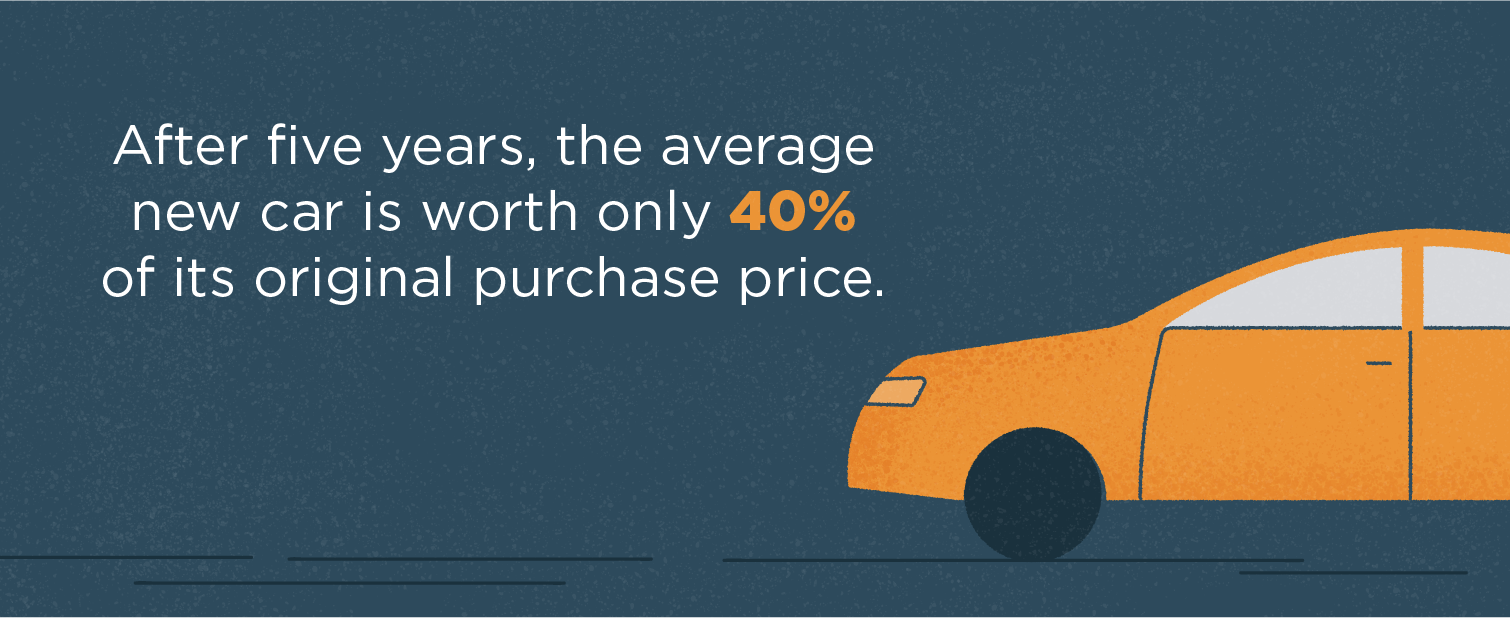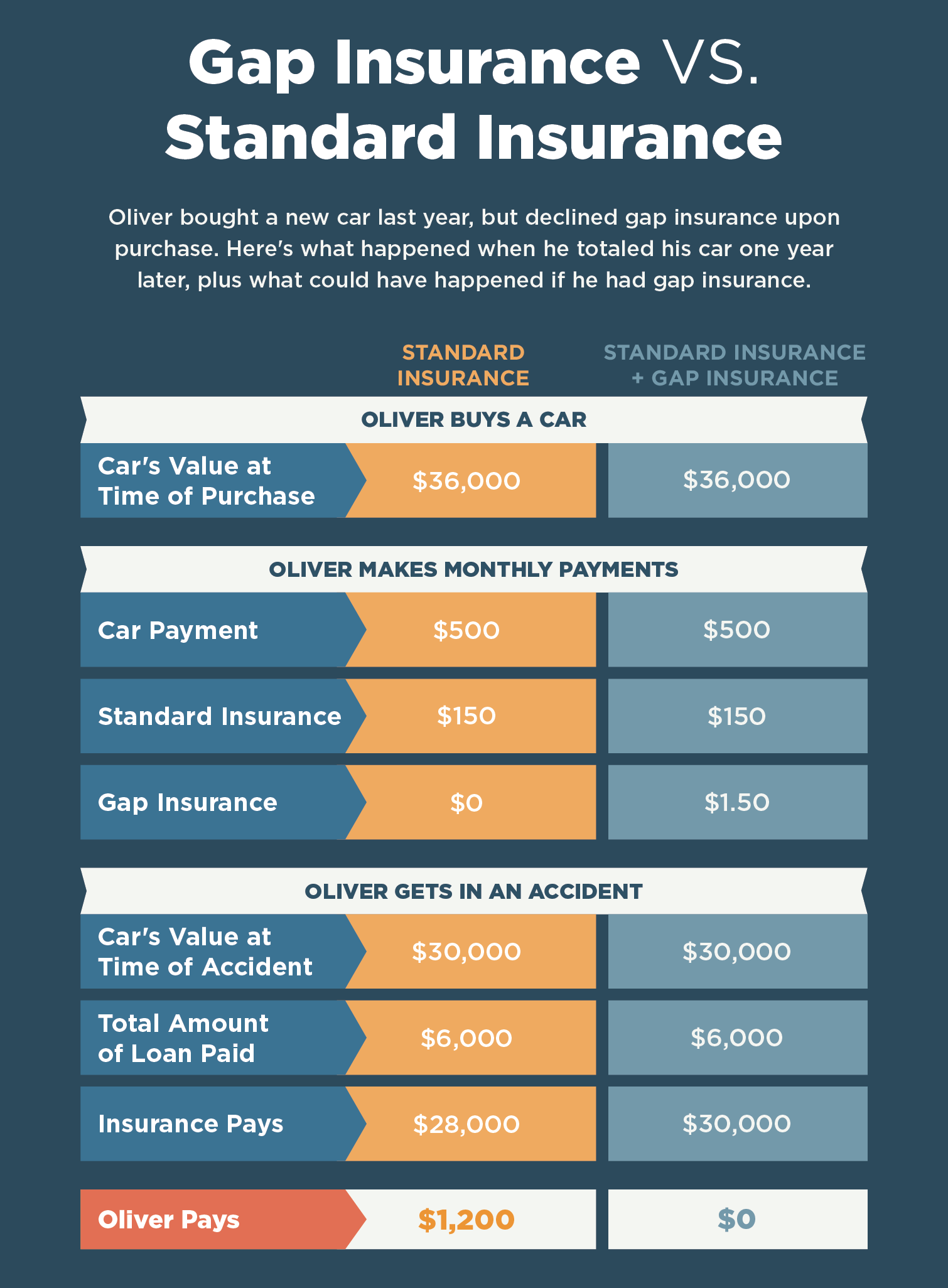
Gap insurance is a type of optional (add-on) car insurance. If purchased, it protects owners against losses that may occur if the compensation from a total loss does not cover the outstanding amount owed on a vehicle’s financing or lease agreement.
A shiny new car may seem appealing as you drive past the dealership — before the sticker shock and the reality of a new auto loan sets in, that is. Even if the initial price isn’t a concern, according to CARFAX, the value of a new vehicle can drop by more than 20 percent after the first 12 months of ownership. Everyone’s heard about how much a car depreciates as soon as it’s driven off the lot, but even after those first 12 months, cars lose 10 percent of their value annually for the following four years.
If you’re planning to own your vehicle for the long haul, the depreciation may not be an issue for you, but if you’re someone who likes to change vehicles relatively often, gap insurance may be something to consider. In the event that your car is totaled, either from an accident or theft, gap insurance could potentially save you thousands of dollars.
What Does Gap Insurance Cover?

Gap insurance is a type of optional (add-on) car insurance. If purchased, it protects owners against losses that may occur if the compensation from a total loss does not cover the outstanding amount owed on a vehicle’s financing or lease agreement. If a car is totaled or stolen, gap insurance pays for the difference between the value of the car and the balance of its loan or lease. Contrary to popular belief, “gap” doesn’t refer to that price disparity. It’s an acronym that stands for “guaranteed asset protection.”
In the early years of owning a new car, the amount of the loan may exceed the market value of the vehicle itself. Gap insurance covers the difference between what a vehicle is worth at the time of total loss (the depreciated value) and the amount you still owe on it.
How Gap Insurance Works
Standard auto insurance policies typically only cover the current market value of the vehicle at the time of a claim. Gap insurance is meant to supplement collision or comprehensive coverage.
Let’s say you bought a brand-new car for $36,000, and one year later your car is totalled in a covered collision. Assuming you’ve been making your monthly payments, you most likely still owe around $30,000 on your loan. At the same time, the value of the car may have dropped as much as 20 percent in the first 12 months, making it worth $28,800 at the time of the collision.
Standard car insurance would pay your lender up to the car’s depreciated value — in this case, only $28,800. That means you would have to pay $1,200 out of pocket to settle the auto loan. However, if you have gap insurance, your insurer would help pay that $1,200.
When to Get Gap Insurance
You may want to consider buying gap insurance in the following instances:
- You made a down payment of less than 20 percent.
- You negotiated financing terms of 60 months or longer.
- You’re leasing the car (some lease agreements require you to have gap insurance)
- You purchased a car that depreciates at a faster-than-average rate.
- You traded in your previous car and rolled negative equity into a new loan.
How to Get Gap Insurance
There are a few ways to go about getting gap insurance. The most straightforward option is to go through your auto insurer and have it added as a portion of your insurance payment. For a one-time fee, you can go through the dealership, lender or a company that specializes in gap insurance. It’s wise to shop around, as rates differ between providers.
How Much Gap Insurance Costs
On average, gap insurance is about $20 a year on top of comprehensive and collision coverage. Some options charge a single fee between $500 and $700 for gap insurance, but it’s worth noting that if you add gap insurance coverage to your loan you’ll also pay interest on it.
Gap Insurance Alternatives
There is an alternative to gap insurance called loan/lease payoff. Unlike gap insurance, loan/lease payoff covers just a percentage of your car’s value on top of the current market value — often around 25 percent. Several major insurance companies offer loan/lease payoff.
If you’re set on buying a brand new car, gap insurance can be a lifesaver in the unfortunate scenario that your car is totaled in the first few years of ownership. Even if a new car isn’t financially feasible and your credit isn’t where you’d like it to be, there are still ways to buy a car with a low credit score. That being said, if you have a poor credit score, you’ll likely pay higher insurance premiums and higher interest rates, so it may be worth working on improving your credit score before making the big purchase.
